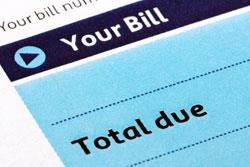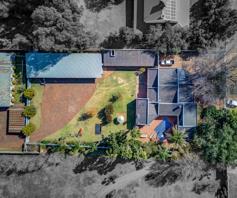The electricity charges that are put out by various municipalities in the Free State now have extensive Time Of Use (TOU) meters where charges are based on whether you use electricity during the summer or winter period (May to August) and what part of the day (peak/off peak/standard) as an example.

Spencer says in Bloemfontein for example, not only are winter tariffs 78 percent higher than those for the summer period but tariffs increase annually on 1 July of the municipal financial year.
More importantly these tariffs include an access charge (like the old basic charge) but more importantly a Peak Demand Charge, which is effectively a very high rate charged on the peak for the complex for the month, explains Mike Spencer from Platinum Global.
“These tariffs are definitely much higher than the normal disc meter charges and while the intention is to have everyone on a TOU meter, the differences currently in place are causing much of the unhappiness.”
Spencer says the Peak Demand Tariff is being charged not only for the current month but for 12 months into the future or until a higher peak is reached.
As this is a large portion of the account this does not help the situation.
In addition, he says many people still do not understand that these charges are not aimed at Sectional Title Schemes but at all bulk users irrespective of whether they are residential or commercial or a combination of both.
He points out that many municipalities are in a total shambles and are either not sending out accounts or they send out incorrect ones or estimated ones – this makes it exceedingly difficult for managing agents and trustees to recover correct amounts from occupiers.
Despite the fact that most big buildings have had these TOU meters installed, managing agents and trustees still retain the old disc meters for reading accounts.
This makes it impossible to allocate electricity usage fairly so that:
1. People who use large amounts of electricity at peak times are subsidised by those that don’t. You then get complaints from people who are making serious efforts to save electricity that their accounts are high
2. This is reverse incentive for heavy users to reduce their usage (because of this subsidy their accounts do not seem as high as they should be)
3. That because of the disc meters the Peak Demand Charge is shared among every one instead of being paid by those that create the Peak – another disincentive for heavy users to use less electricity.
Still of concern is the fact that owners and occupiers simply do not understand how the new system works and cannot believe the bills that they are receiving.

He points out that many municipalities are in a total shambles and are either not sending out accounts or they send out incorrect ones or estimated ones – this makes it exceedingly difficult for managing agents and trustees to recover correct amounts from occupiers.
Spencer says in Bloemfontein for example, not only are winter tariffs 78 percent higher than those for the summer period but tariffs increase annually on 1 July of the municipal financial year.
“Thus you get a 78 percent increase from the beginning of May and then another (this year 8) on top of that from 1 July and then from 1 September the rate drops back to the new summer rate – and all complaints stop.”
“One would want to look at the situation more carefully, that not only are the rates 78 percent higher for winter tariffs but we do use more electricity in winter months and that most of this increase happens during the peak tariff periods.”
Is there a solution to the problem?
There are no easy or cheap solutions, however, the following may help:
1. Educating occupiers and owners until they understand how the system works is vital. Until they really understand how the new electricity tariffs work there will continue to be problems
2. Seriously look at installing similar TOU meters for each unit and a piggy back main meter to monitor the municipal meter. By doing this you can then send out electronic accounts that show in detail individual accounts.
It is a big eye opener for each user. What it also does is to make the account reflect the users portion of electricity used and when, and to charge them accordingly.
You will find that families that go to work will pay more (because they are using electricity far more extensively during high periods while retired couples who use electricity in lower tariff periods will pay less.
“The incentive is now to look at your account in details and adjust your habits to reduce your own costs.”
Installing the piggy back main meter means that you do not have to wait for the municipal account to send out accounts – in fact these accounts are automated.
The new system will allow for each user to view their usage pattern in half hour slots by internet or cell phone.
3. Change from an account based system to a prepaid system as this allows for users to manage their usage far more closely.

The electricity charges that are put out by various municipalities in the Free State now have extensive Time Of Use (TOU) meters where charges are based on whether you use electricity during the summer or winter period (May to August) and what part of the day (peak/off peak/standard) as an example.
They have to or they will run out of money. The change to prepaid will not be popular but it is essential otherwise you will find that your accounts exceed any deposit you have and when the occupant leaves it will be difficult to recover the outstanding amounts.
Problems associated with pre-paid electricity include the fact that:
(a) Unless you do it in-house, it is an expensive system to administer – Spencer says they have found meter reading companies charging R170 for collecting prepaid.
(b) Electricity cannot be bought from anywhere (supermarket or garage for example) but must be bought from the managing agent during office hours.
Many people do not understand why they cannot buy electricity at any time. (Previous systems meant that it was impossible to balance amounts paid for electricity with the account received for electricity and it is virtually impossible to collect TOU charges, Peak Demand Charges etc).
(c) People don’t bother to check how much electricity they have left and run out, or their money is received after the cut off dead line each day. (You can only credit their account once the money has been deposited in the body corporate account and has been received into the body corporate account – paying from one bank to another can take two days for example).
Thus you have a constant flow of people who phone after hours because they have run out, he says.
While it is costly to install your own TOU meters the alternative is a constant unhappiness of users and monthly shortfalls that must be funded from levies.
Spencer says a big advantage of prepaid accounts is that when electricity runs out – it runs out. With account systems supply not only is the last account not paid but the current usage is not paid and you have the problem of disconnecting electricity for unpaid accounts and the result is that you then have far more problems than the prepaid system.
He adds that in many buildings they manage, they have now moved over to similar meters for water usage.







